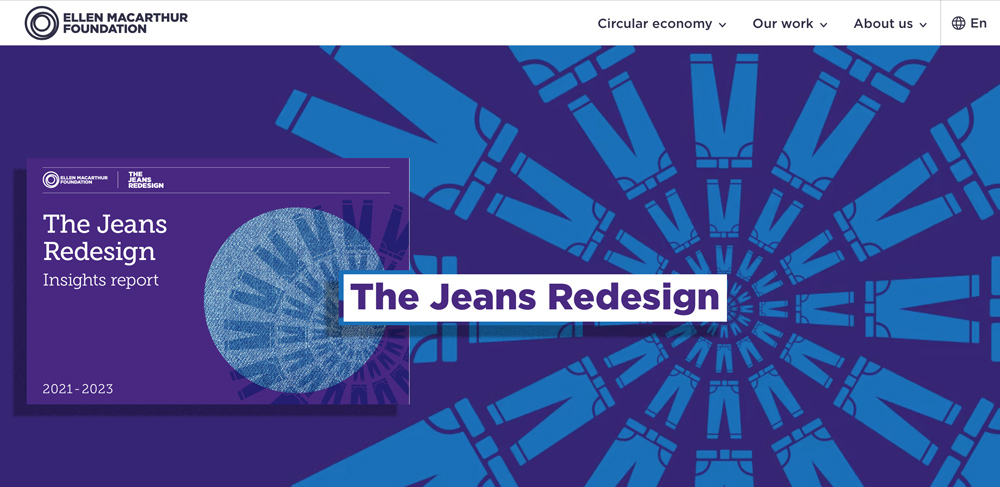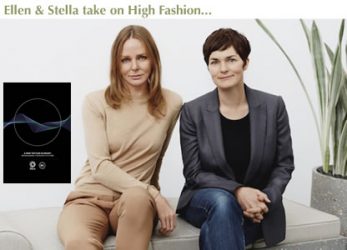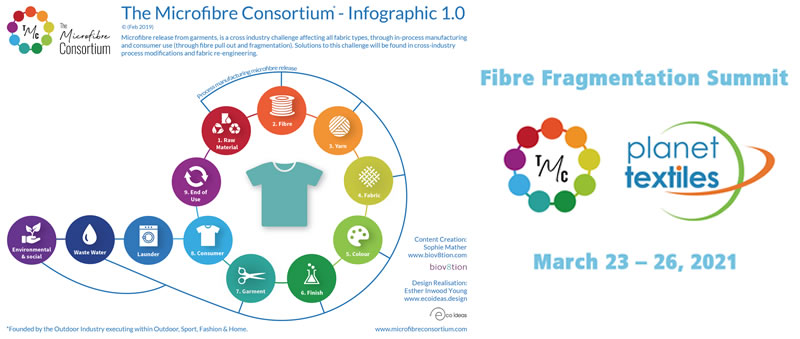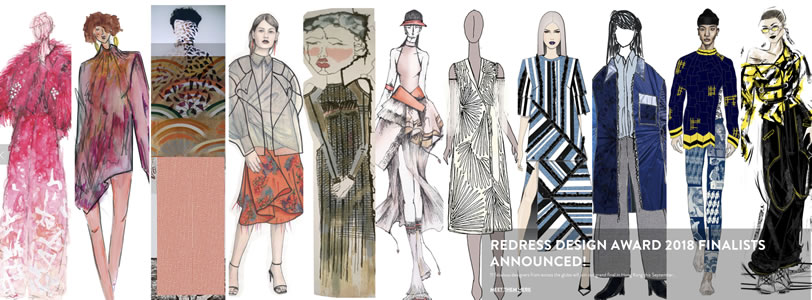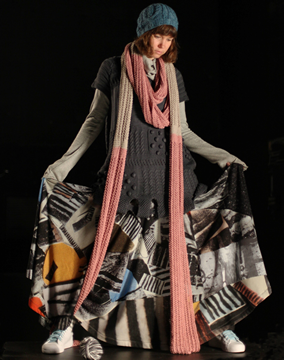
Fashion and Textile Design
Responsible Apparel / Materials
- Aim to make long lasting clothing The more durable a garment the greater the timespan before replacement is needed, less resources are used
- Strive to design clothing with classic lines Fashion styles are transient fads which require constant redundancy, classic styling equals a long life
- Consider the use of recycled materials with a high Post Consumer Waste (PCW) recycled content PET drink bottles recycled into polyester yarns, charity shop discards shredded to make new yarn, rubber tyres into shoe soles
- Consider the use of natural renewable materials Fibres like Cotton, Wool and Silk are renewable unlike virgin synthetics which are a by-product of non renewable fossil fuel extraction
- Consider the use of unbleached materials Bleaching requires the use of toxins which are harmful to marine and water based life
- Consider the use of chemical free natural materials Cotton, for example, is often processed using toxic formaldehyde to reduce shrinkage and wrinkling
- Consider the use of undyed materials Many dyes leach heavy metals into groundwater and waterways during production, home washing and landfill disposal
- Consider the use of naturally coloured materials Green and Brown cotton can grown without dyeing, Wool can be naturally black, grey, brown, fawn and ecru
Ellen Macarthur Foundation Jeans Redesign Project 2021-23. This report and process are so good in many ways. They like to call it Circular Design and Circular Economy. Yet, SRD prefers to increase its value and intent by saying it is simply Responsible, or even better, part of the process of a Responsible Living Economy. We would love to get your e-media response and thoughts on this (SRD on LI or facebook.com/SRD.Change). https://ellenmacarthurfoundation.org/the-jeans-redesign/overview #circulareconomy #circulardesign #responsiblefashion #responsibledesign
- Maximise fabric yields and minimise fabric wastage by carefully checking layplans & garment Design Extravagant pattern shapes can lead to a high amount of unwanted material which is then thrown away
- Consider laying up with cardboard patterns instead of using computer generated layplan paper Computer Aid Manufacture needs new throwaway paper plans every time a new cut is done, cardboard can be used over & over
- Design functional garments Pockets that can actually be used and are not for affect, ornamental components avoided , sized for comfort not vanity, etc.
- Use synthetic dyes which are colourfast or completely biodegradable if natural based dyes Coloured dyes can leach out during fabric/garment dyeing and washing contaminating waterways
- Consider wherever possible using organic materials Organic fibres are grown without the heavy use of potentially toxic synthetic insecticides, herbicides and fertiliser
- Consider the use of natural renewable components Buttons and Jewellery can be made from Tagua nuts from the Amazon rainforest. Plantation wood buttons as well
- Consider the use of recycled and/or recyclable components Recycled PET cords, labels, webbings and 100% polyester recyclable zippers. Also recycled glass as buttons & toggles
- Investigate alternative fibre sources Hemp can be grown organically and has the strength of polyester, Tencel is plantation pulp extruded through a recycled solvent process
Comprehensive FREE report : A new textiles economy: Redesigning fashion’s future (or Ellen & Stella take on the High Fashion industry) Huge CO2 savings & environmental benefits if we: 1. Phase out substances of concern and microfibre release 2. Transform the way clothes are designed, sold, and used to break free from their increasingly disposable nature 3. Radically improve recycling by transforming clothing design, collection, and reprocessing 4. Make effective use of resources and move to renewable inputs. Great work and report from EMF https://www.ellenmacarthurfoundation.org/publications/a-new-textiles-economy-redesigning-fashions-future
- Avoid use of materials or construction detailing that requires special laundering Dry-cleaning, for example, is an expensive process which uses toxic solvents, such as hydrocarbons which are linked to ozone depletion
- Educate both retail and end use customers on the environmental benefits of their designs Customers once educated will demand, or at least expect, the same high environmental standards from other garment designers
- Investigate methods of reducing materials waste in the production process Short roll ends can be sold to staff, clean cutting scraps given to Reverse Garbage for school projects, natural fabric scraps composted
- Keep informed of the latest environmental developments in materials, components and manufacture New technologies and rediscoveries of old techniques for green design are occurring constantly
- If you must use synthetic materials aim to use homogeneous (all the same) materials For example some garments are 100% polyester, including labels, trims and thread so they can be recycled without contaminants
- If using natural materials consider using all naturals It should be possible to compost 100% natural garments, especially unbleached, organic materials, after their long useful life
- Ask their material suppliers to provide a comprehensive background on the fabrics and trim Exhibiting interest in the technical and environmental history of a suppliers materials keeps them aware of their products shortcomings
- Provide concise information on material content and care/laundering on permanent garment labelling Educated customers will value their garments and treat them with respect which will lead to longer useful garment life
CDFA Resources & Tools: An excellent selection of sustainability information across several sections: Supply Chain & Manufacturing / Sustainability A-Z Resource Directory / Sustainable Strategies and much more. https://cfda.com/resources-tools
ZWDO Collective
Zero Waste Design Online is an international collective that develops online educational resources in the field of zero waste design and systems thinking for fashion. We seek to transform the industry through open dialogue around garment construction, pattern cutting, design methods and innovative use of technology. Our Intention. We know it can be hard to find reliable information about zero waste design methods and processes, so we wanted to put all our collective knowledge in one place and provide people with the tools to make changes happening in the garment making world. zerowastedesignonline.com
Microfibres are a growing issue: As the global apparel industry starts to get to grips with its contribution to pollution related to textile fibre fragmentation, the microfibre consortium held an online edition of its fibre fragmentation summit in march 2021 – in partnership with planet textiles. https://www.microfibreconsortium.com/summit and https://www.microfibreconsortium.com/about
Sustainability TV : RECYCLED RUNWAY: Young Designers & The Most Sustainable of Haute Couture. Focused on high fashion, minimum footprint creations. Becoming the new ‘norm’, eco fashion shows how we may follow the latest trends while working towards best green practice ideals for all sourcing, materials, production and end use by intentionally factoring in all these parameters at the start. Article Link :: Boulder, Colorado, USA

